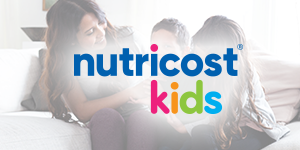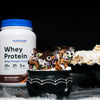Why You SHOULDN’T Cut Sugars From Your Diet

“Sugar, stay away from it.”
That’s what we always hear, but the truth is that sugar is part of a healthy diet. Does this mean we have the green light to eat all the sweets we want? Hold your horses. While sugar isn’t necessarily bad, not all sugars are created equal.
Good Sugars, Bad Sugars
Natural sugars are good for us, and we are well adapted to eating them. Natural sugars are found naturally in foods such as fruit (fructose) and milk (lactose). Our bodies use these sugars for energy.

Did you know? One sign of Alzheimer’s Disease is that the brain becomes unable to metabolize glucose. In other words, without sugar, your brain cannot function properly.
It is incredibly difficult to over-consume natural sugars. Fiber in fruit slows down digestion and gives you the feeling of being full, and protein in milk has a similar effect.
Added sugars, on the other hand, contain no nutritional value. No fibers. No proteins. Because of this, your body breaks it down extremely rapidly, causing insulin and blood sugar levels to skyrocket. This also means that you don’t feel full after you’re done eating a mountain of sweets, no matter how many calories you consumed.
So what are added sugars? Simply put, added sugars are any sugars which are added to food or beverages during processing or preparation. All sugars which you might purchase at a grocery store are added sugars including white sugar, brown sugar, and honey to name only three.
The most infamous added sugar is high fructose corn syrup, but we’ll talk about that more in the next section.

While natural sugars are fine and even healthy, it is wise to limit intake of added sugars.
What About High Fructose Corn Syrup?
High fructose corn syrup has become public enemy #1 in many health circles. But does it deserve its reputation?
High fructose corn syrup (HFCS) is derived from corn and became popular at a time when sugar prices were extremely high and corn was cheap due to government subsidies. Like most added sugars, HFCS is a compound sugar called sucrose which contains both fructose and glucose. Natural sugars are mostly simple sugars with the exception of lactose.

HFCS comes in several varieties.
- HFCS 42: Contains 42% fructose and is used in processed foods and cereals.
- HFCS 55: Contains 55% fructose and is used mostly in soft drinks.
- HFCS 95: Contains 95% fructose, and is hardly ever used due to being too sweet.
Sucrose created from processing sugar cane and beets (also known as table sugar) contains glucose and fructose in a perfect 50/50 split. In its 42 and 55 varieties, HFCS actually isn’t much worse than other added sugars.
Sugar in the Body
The main culprit responsible for added sugars’ rap sheet of health crimes is their extremely high fructose content. Natural foods like fruits really don’t have much. The liver is the only organ which can metabolize sugar in significant amounts. When it gets overloaded, it turns fructose into stored fat.
Added sugars can lead to obesity, a condition which is heavily correlated with all sorts of health risks ranging from heart disease to a wide variety of cancers.
So, how much sugar is too much? Experts say that, at most, 10% of our daily calories should come from sugar. How nice of them to make the math so easy for us, don’t you think? 
What About Natural Sweeteners?
The benefits of sugar alternatives are still hotly disputed, and much more research needs to be done before anything can be definitively said about their health benefits.
However, here is a list of a few natural sugar alternatives should you be interested in giving any of them a try!
Stevia
Stevia is a plant based sweetener which is derived from the leaves of a south american shrub, Stevia rebaudiana. Stevia can be up to 200 times sweeter than table sugar which means that you need far less of it when cooking or baking or just sweetening up your morning coffee.

Sugar Alcohols
Sugar alcohols are water-soluble liquids which are hybrids of sugar molecules and alcohols. The bacteria in your mouth don’t ferment sugar alcohols, so they don’t damage your teeth in the way that regular sugar does. Sugar alcohols can also be helpful for those with diabetes. They also have fewer calories and don’t affect blood sugar levels as significantly as regular sugar.
Monk Fruit
Monk fruit is a small, green gourd which is found in southeast asia. It’s extract is estimated to be between 150 and 300x sweeter than sucrose. However, monk fruit products are frequently mixed with other sweeteners, so be certain to read the label of any you purchase.
Dates
Dates are a stone fruit, meaning that their flesh surrounds a single seed (olives are another stone fruit). Unlike refined sugar and many other sweeteners, dates are a good source of nutrients, including fiber, potassium, magnesium, manganese, vitamin B6, and carotenoid and polyphenol antioxidants. They’re also great for cooking!

A Note About Honey, Syrup, and Molasses
These are all naturally occurring sugars and all are somewhat healthier than refined sugars. However, they are still high in sugar and calories and should be used in moderation.
The Bottom Line
Now you know! Natural sugars are good for the body, and so fad diets which claim to be “0 sugar” are, in fact, cutting out an essential nutrient.
The sugars you should avoid are added sugars. These days, it is common to find added sugars and natural sugars listed separately on food labels, so keep an eye out if you’re wanting to try limiting your added sugar intake.
Sources
-
Posted in
General Health









